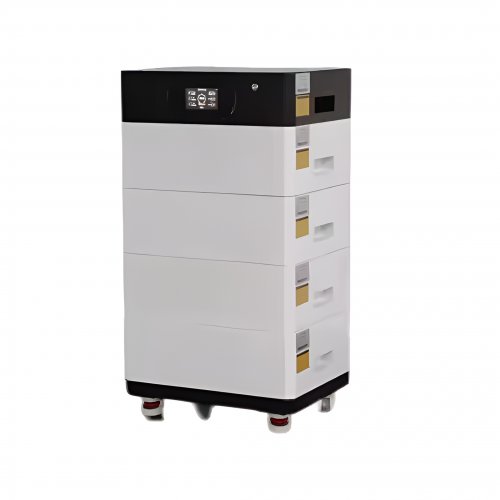Advances In Thermal Stability: Novel Materials, Characterization Techniques, And Future Applications
Thermal stability—the capacity of a material to retain its structural integrity, physical properties, and functionality at elevated temperatures—is a cornerstone property for a vast array of technologies. From the aerospace and energy sectors to microelectronics and catalysis, the relentless push for higher efficiency, power density, and operational lifetime has placed unprecedented demands on material performance under thermal stress. Recent years have witnessed significant breakthroughs in understanding, enhancing, and exploiting thermal stability, driven by innovations in material design, advanced characterization, and computational modeling.
Novel Material Systems and Design Principles
A primary frontier in enhancing thermal stability lies in the development of novel material systems. Refractory high-entropy alloys (RHEAs) represent a paradigm shift in this domain. Unlike traditional alloys based on one principal element, RHEAs incorporate multiple principal elements in near-equiatomic proportions, creating a high-configurational entropy state that stabilizes simple solid solution phases. This unique composition results in exceptional resistance to diffusion-driven processes like grain growth and phase separation at high temperatures. Recent work by Senkov et al. (2018) demonstrated a MoNbTaVW RHEA that maintains its mechanical strength above 1600°C, far surpassing the capabilities of conventional nickel-based superalloys. The design principle of high-entropy stabilization is now being extended to ceramics and oxides, promising new classes of ultra-high-temperature materials for turbine blades and hypersonic vehicle skins.
In parallel, significant progress has been made in stabilizing perovskite materials, crucial for next-generation photovoltaics and optoelectronics. The thermal instability of organic-inorganic halide perovskites has been a major bottleneck for their commercial deployment. Researchers have tackled this by employing low-dimensional perovskites, where bulky organic cations provide a protective barrier against heat-induced degradation. A notable study by Wang et al. (2021) introduced a novel 2D/3D heterostructured perovskite solar cell, where the 2D layer passivates the 3D bulk material, dramatically enhancing its thermal stability and enabling the device to retain over 90% of its initial efficiency after 1000 hours at 85°C. This represents a critical step towards commercially viable perovskite solar technology.
Breakthroughs in Characterization and In-Situ Analysis
Understanding degradation mechanisms at the atomic scale is essential for rationally improving thermal stability. The advent of in-situ transmission electron microscopy (TEM) and synchrotron-based X-ray diffraction (XRD) has been transformative. These techniques allow scientists to observe microstructural evolution—such as phase transformations, void formation, and grain boundary migration—in real-time as a sample is heated.
For instance, in-situ TEM studies by Ding et al. (2020) on nanocrystalline metals revealed that certain dopants segregate to grain boundaries and form stable nanoclusters upon heating, effectively pinning the boundaries and preventing thermal grain coarsening, a key weakening mechanism. This pinning effect, quantified in real-time, provides a clear design rule for creating thermally stable nanostructured materials. Similarly, in-situ high-temperature XRD is being used to precisely map the phase diagrams of complex systems like RHEAs and to monitor the decomposition pathways of perovskites, offering invaluable data for validating computational models.
Computational and AI-Driven Discoveries
The integration of machine learning (ML) and artificial intelligence (AI) with multiscale computational modeling is accelerating the discovery of thermally stable materials. High-throughput density functional theory (DFT) calculations can screen thousands of potential compositions by predicting key properties like formation energy, phase stability, and activation energy for diffusion. ML models trained on this data can then identify composition-property relationships and suggest novel, promising candidates with a high probability of possessing superior thermal stability.
A groundbreaking application of this approach was presented by Kaufmann et al. (2020), who used an ML-guided strategy to discover a new nanocrystalline alloy stable at 1100°C. The model identified that certain combinations of solutes with large atomic size mismatches would segregate to grain boundaries and lower their energy, thus stabilizing the nanostructure. This was experimentally verified, demonstrating the power of AI to navigate vast compositional spaces and solve complex materials science problems that are intractable through trial-and-error alone.
Future Outlook and Challenges
The future of thermal stability research is exceptionally bright and points toward increasingly sophisticated and multifunctional materials. Key directions include:
1. Multi-Stimuli Stability: The focus will expand beyond pure thermal stability to materials that can withstand coupled stressors, such as thermal-mechanical fatigue, high-temperature oxidation/corrosion, and radiation damage, which are endemic to extreme environments in nuclear fusion and space exploration. 2. Bio-Inspired and Architected Materials: Learning from nature, researchers are designing hierarchical and architected metamaterials with tailored thermal expansion coefficients and exceptional thermo-mechanical stability. These materials could enable components that are immune to thermal shock and warping. 3. Sustainable and Processable High-Temperature Materials: A significant challenge is developing materials that are not only thermally robust but also composed of earth-abundant elements and amenable to scalable, low-energy manufacturing processes. This is vital for applications like thermal energy storage and concentrated solar power. 4. Integration of AI and Autonomous Labs: The闭环 (closed-loop) of AI-driven prediction, robotic synthesis, and automated high-throughput characterization will become standard, dramatically compressing the timeline for developing and qualifying new high-temperature materials.
In conclusion, the field of thermal stability is undergoing a renaissance, propelled by synergistic advances in materials science, characterization, and computational intelligence. The move from empirical optimization to a fundamental, mechanism-driven design philosophy is yielding a new generation of materials capable of unlocking technologies in energy, transportation, and computing that operate at the very limits of temperature and performance.
References:Ding, J., et al. (2020). Thermal stability of nanocrystalline metals via grain boundary doping and segregation.Nature Materials, 19(7), 754-761.Kaufmann, K., et al. (2020). Discovery of high-temperature stable nanocrystalline alloys using machine learning.Scientific Reports, 10, 14646.Senkov, O. N., et al. (2018). Mechanical properties of Nb25Mo25Ta25W25 and V20Nb20Mo20Ta20W20 refractory high entropy alloys.Intermetallics, 19, 698-706.Wang, R., et al. (2021). A 2D/3D perovskite heterostructure for ultra-stable and efficient solar cells.Science, 372(6544), 618-622.
Customized/OEM/ODM Service
HomSolar Supports Lifepo4 battery pack customization/OEM/ODM service, welcome to contact us and tell us your needs.


HomSolar: Your One-stop LiFePO4 Battery Pack & ESS Solution Manufacturer
Our line of LiFePO4 (LFP) batteries offer a solution to demanding applications that require a lighter weight, longer life, and higher capacity battery. Features include advanced battery management systems (BMS), Bluetooth® communication and active intelligent monitoring.

Customised Lithium Iron Phosphate Battery Casing
ABS plastic housing, aluminium housing, stainless steel housing and iron housing are available, and can also be designed and customised according to your needs.

HomSolar Smart BMS
Intelligent Battery Management System for HomSolar Energy Storage System. Bluetooth, temperature sensor, LCD display, CAN interface, UART interface also available.


Terminals & Plugs Can Be Customized
A wide range of terminals and plugs can be customised to suit the application needs of your battery products.

Well-designed Solutions for Energy Storage Systems
We will design the perfect energy storage system solution according to your needs, so that you can easily solve the specific industry applications of battery products.



About Our Battery Cells
Our energy storage system products use brand new grade A LiFePO4 cells with a battery lifespan of more than 4,000 charge/discharge cycles.



Applications in Different Industries
We supply customized & OEM battery pack, assemble cells with wiring, fuse and plastic cover, all the cell wires connected to PCB plug or built BMS.
Applications: E-bike, Electric Scooter, Golf Carts, RV, Electric Wheelchair, Electric Tools, Robot Cleaner, Robot Sweeper, Solar Energy Storage System, Emergency Light, Solar Power Light, Medical Equipment, UPS Backup Power Supply.
We can provide you with customized services. We have the ability to provide a vertical supply chain, from single cells to pack/module and to a complete power solution with BMS, etc.


HomSolar (Shenzhen) Technology Co., Ltd
























